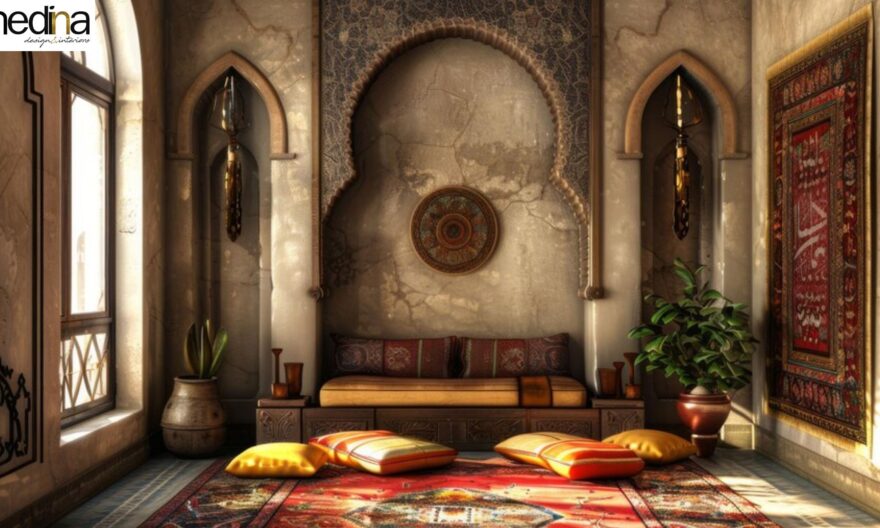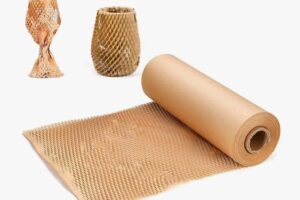
Islamic interior design: this is simply the perfect and timeless style that brings warmth and serenity into one’s house while exuding class and elegance. Its source of inspiration is Islamic art, culture, and architecture. The style leans towards harmony, balance, and elegance. It is good for people who feel an attachment to distinct designs with rich cultural value. Whether you want a full changeover in your home or just introduce a few elements of this trend, this guide will help you know how to achieve it.
What is Islamic Interior Design?
Islamic interior design is a style that has inspirations in Islamic culture and beliefs. Such interior designs are known for all the details, bright colours, and intricate patterns. Often, it includes beautiful calligraphy, arabesque, and geometric patterns. Those elements there are not just mere decorations; rather, they represent Islamic traditions that focus on peace and a serene atmosphere. Often, natural materials and soft lighting create an ambience welcoming yet peaceful.
Key Features of Islamic Interior Design
- Geometric Designs: Intricate patterns that convey unity and harmony. These designs look more like a signature mark of Islamic art.
- Arabesque Designs: These designs are derived from nature such as flowers and vines. They are rendered in a way that they create an impression of continuous movement.
- Calligraphy: In an Islamic context, it is quite common to come across lines from the Holy Book of the Quran in calligraphy. This generates spiritual appeal to the house as well as contributes to the overall aesthetic element.
Now, that you know what is primary about these features, let’s see how you can incorporate them into your house.
How to Incorporate Islamic Elements into the Home
1. Utilize Geometric Patterns
Geometric patterns are part of the most identifiable elements of Islamic design. They speak of infinity, unity, and the eternal nature of the created world. You can just add these patterns to your walls, tiles, or furniture and instantly give your house that touch. However, for something subtle, you may use a patterned rug or wallpaper.
- Wall Art: Geometric wall art is perhaps one of the simplest and easiest ways to introduce Islamic design into your home.
- Tiles: Geometric mosaic tiles in bathrooms or kitchens help to bring this feature into a room.
- Rugs: A rug with a geometric pattern adds some texture and style to any room.
2. Add Calligraphy
The best feature of Islamic calligraphy is that apart from being beautiful, it also carries meaning. It mostly uses verses of the Quran or some other sayings about religion. Adding calligraphy to your home not only gives it an artistic look but also brings peace and spirituality along.
- Wall Hangings: Dangling calligraphy on the walls as a point of spirituality.
- Accent Pieces: Cushion covers or table runners with calligraphy details.
- Ceramics: Plates, bowls, and vases with calligraphy can be used all over.
3. Earth Tones and Natural Materials
Typically, interior design in Islam consists of using natural materials such as wood, stone, and metal. This would, in itself, give your house an earthy feel and grounding. Also, the colour palate here is often warm, rich tones in shades of terracotta, deep red, gold, and green. Additionally, the colours are gentle and luxurious, creating that perfect balance for a living place.
- Furniture: Wooden furniture is to be used with carvings. Moreover, wooden furniture best serves the current need for functions and aesthetics for one’s home.
- Floor: The space can be made to look luxurious while it’s cool and classy with stone or marble floors.
- Decor: This décor is fitting if elements are added such as metal lanterns or wooden trays which can show the organic feel.
4. Soften with Lighting
Lighting has been an important part of Islamic interior design. Soothing, diffused lighting calms the brain and presents a clear focus. Harsh direct lighting is to be avoided; however, lanterns, pendant lights, or even candlelight will produce a soothing ambience.
- Lanterns: Islamic lanterns, whether brass or copper, are warm and very inviting.
- Pendant Lights: These are used above dining tables and in hallways for some kind of ambience.
- Candles: Place candles in candle holders for a soft subtle lighting source.
5. Arabesque Motifs
Arabesques are flowing curving designs that can contain floral or vine-like motifs. Moreover, these motifs are very symbolic and depict mostly the infinite nature of creation. Additionally, adding arabesque motifs to your home will give it a sense of elegance and movement.
- Furniture: Use the furniture with arabesque carvings to make a subtle but impactful statement.
- Textiles: In Arabesque patterns, use curtains, cushions, and bed linen to integrate a balanced stylish look.
- Tiles and Wall Art: Inlay these intricate patterns on your wall or floor for an atmospheric effect.
Tips to Achieve a Balanced Islamic Design
A balance between beauty and functionality is the prime requirement of Islamic interior design. However, here are a few tips to get it right:
- Do Not Overcrowd It: Not too many details but highly ornate. Always keep it simple and elegant. Do not overload the space.
- Use Modern and Traditional Mix: Okay, intermixing modern furniture with traditional Islamic designs is pretty good. This way, your space will be fresh and functional.
- Focus on Quality: Invest in materials of high quality. You can choose hand-carved wood or artisan-made ceramics. This way, the authentic and timeless feel of your design won’t fade.
- Create a Focal Point: It could be simple calligraphy or just a beautiful geometric pattern, but whatever the design choice is, have one thing that would draw your eyes.
Why Choose Islamic Interior Design?
Islamic interior design styles offer more than just beauty. It brings a sense of peace, spirituality, and harmony into your home. Further. The intricate details and natural materials create a space that is both luxurious and welcoming. Moreover, the focus on soft lighting and calming colours promotes relaxation, making your home a true sanctuary.
In today’s fast-paced world, having a space that encourages mindfulness and tranquillity is invaluable. Islamic design does just that, blending elegance with a spiritual touch that makes your home more than just a place to live—it becomes a retreat.
Conclusion
Islamic interior design is a timeless style that combines culture, spirituality, and artistry. Moreover, by incorporating geometric patterns, arabesque designs, and calligraphy, you can transform your home into a serene and elegant space. Focus on using natural materials and soft lighting to create a warm, welcoming environment. Lastly, whether you want to fully embrace this style or simply add a few touches, Islamic design is a beautiful way to enhance your living space.




